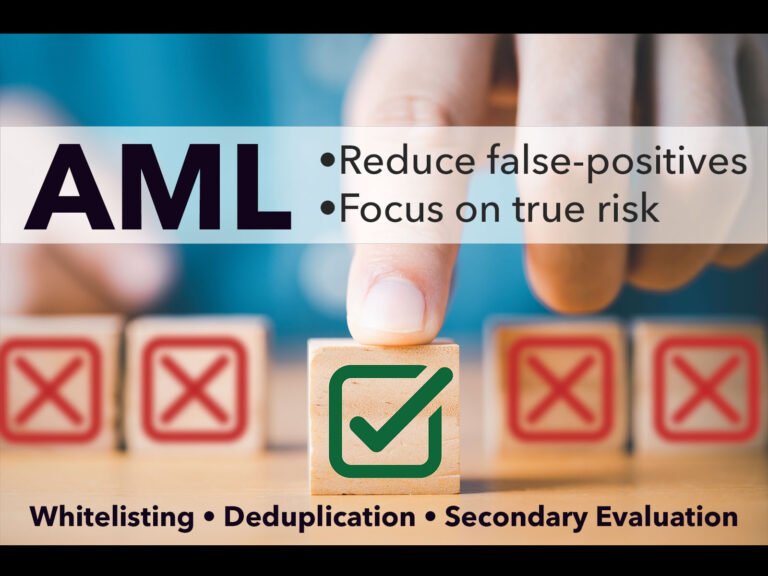For a moment think about an organization that has spent millions of dollars on its AML system just to catch suspicious transactions within their organization.
But what the system actually does is that it flags even legitimate transactions the suspicious ones.
However, after investigation the compliance team found out that this was a system flaw that generated a false positive result.
Wouldn’t it be frustrating for businesses, it definitely would.
And No business will ever want to install a system like that, especially when they’re trying to fight against money laundering and financial crimes.
So, there must be a solution to such systematic errors. Obviously, there is.
This blog writing will discuss the false positive, why it occurs, and the way forward for businesses to stay compliant and never let any transaction unnoticed.
Understanding the False Positive and False Negative
False positives are actually the system errors that flagged the legitimate transaction as the suspicious one.
When we think about false positives in general it doesn’t seem like such a big deal. But when it comes to AML compliance efforts even a minor mistake can cause business million-dollar fines and reputational damage.
What Impact False Positive can have on Financial Institutions?
Though the higher rates of false positives can damage the business’s reputation in many ways we have come up with the major challenges a business can face due to higher rate of false positives. Let’s discuss them one by one.
- Operational Challenges
If financial institutions are facing a lot of false positive results, it will automatically overburden the compliance team.
This will ultimately reduce the operational process. So the first impact that false positives can have on any business is on its business operation.
That is why Investigating each flagged transaction takes time and resources and it also needs to divert attention from more critical tasks to another.
- Higher Financial Cost
Do you think handling false positive just need extra time? This is not the case when you are making sure not even a single transaction that could lead to money laundering goes unnoticed.
This is why Handling all false positives costs businesses higher financial costs as well. Businesses may have to hire some additional staff that is experts in investigating the flagged transactions and segregating the real threat and false positive or false negative results.
- Customer Frustration
Will the customer whose legitimate transaction is flagged as suspicious and he has to spend hours in your office just to make his transaction come back to you? He will not come back.
Because, in such cases the real potential customers often get frustrated and they shift to a company that has a better AML system in handling false positive and false negative results.
What are the Reasons behind False Positive Occurance?
- Strict Customized rule or Conservative Systems
It has been observed that the over- caution organization often sets strict customized rules to detect even the less suspicious transactions.
And that even leads to a higher rate of false positives. Or the system with conservative filters is more likely to flag the transactions.
- Poor Data Quality and System Integration
Having limited or poor data in your system and a system that is not integrated well have greater chances of creating false positive and false negative results.
When the system does not have the latest updates about the AML regulations as well as the clients, it will definitely increase the chances of unnecessary alerts.
How Business can reduce the False Positive rate?
1. Integration of Advanced Technology
The major reason any system generates a higher rate of false positives is having an old or manual system of detecting suspicious transactions. however, with advanced AI and ML integrated systems, Financial institutions can enhance the efficiency of their system which will produce accurate AML results.
Because the advanced technologies have the ability to distinguish between suspicious and legitimate activities which will ultimately reduce the number of false positive results
2. Improve Data Quality
A well-structed data means the more accurate results. So to reduce the false positive results, businesses need to make sure the data they gather is clean, accurate,e and well-integrated across the system. as this will likely reduce the false positive results.
One great way is to Regularly update and review data sources to maintain high-quality AML processes.
3. Regular Monitoring and Updates
Last but not least, having a robust system installed once doesn’t mean you do not need to update and monitor it. As the challenges of money laundering evolve every day, businesses also need to update.
This is why Regular reviews can help identify areas for improvement and ensure that the system is functioning as effectively as possible.
Is your business also facing higher rates of false positives? Causing your frustration and operational damage? Don’t worry, incorporate the Advance AML monitoring and screening solution that come with zero false positive rates and reduce your compliance cost by 50%.


